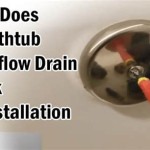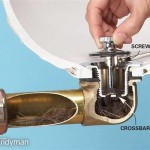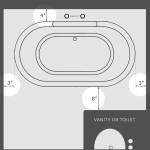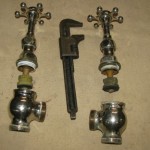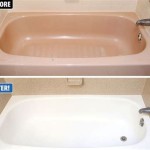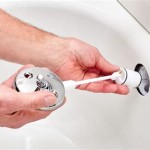Bathtub Drain Up or Down: Understanding the Essential Aspects
When embarking on a bathroom renovation or encountering plumbing issues, the direction of the bathtub drain is a crucial consideration that can impact the efficiency, aesthetics, and functionality of your bathroom. Bathtub drains can be installed in an upward or downward direction, each with its advantages and disadvantages. Understanding the key aspects of each can help you make an informed decision based on your specific needs.
Upward Draining Bathtubs
With an upward draining bathtub, the drain is positioned at the bottom of the tub and opens upwards. This design allows water to flow directly into the drain, eliminating the need for a visible trap or overflow drain. Some benefits of upward draining bathtubs include:
- Aesthetically pleasing: The absence of a visible trap creates a cleaner, more streamlined look.
- Easier to clean: Without a trap, there are no hidden areas where dirt or debris can accumulate.
- Less prone to clogging: The upward flow of water helps prevent hair and soap scum from accumulating in the drain.
Downward Draining Bathtubs
Downward draining bathtubs have their drain located at the bottom of the tub and opening downwards. This design requires a visible trap or overflow drain to prevent water from flooding the bathroom. While not as aesthetically pleasing as upward draining tubs, downward draining tubs offer several advantages:
- Improved drainage: The downward flow of water creates a stronger suction effect, resulting in more efficient draining.
- Prevents overflow: The overflow drain provides an additional path for water to escape, preventing flooding accidents.
- Easier access for repairs: The trap and overflow drain are easily accessible for maintenance or repairs.
Factors to Consider When Choosing
The decision between an upward or downward draining bathtub hinges on several factors, including:
- Bathroom aesthetics: Upward draining tubs offer a more modern and minimalist look, while downward draining tubs provide a more traditional appearance.
- Drainage efficiency: Downward draining tubs generally drain more efficiently due to the stronger suction effect.
- Clogged drains: Upward draining tubs are less prone to clogging, but if a clog occurs, it can be more difficult to access and remove.
- Maintenance and repairs: Downward draining tubs provide easier access to the trap and overflow drain for maintenance and repairs.
Conclusion
The choice between a bathtub drain facing up or down depends on your individual preferences, bathroom design, and functional requirements. Carefully considering the advantages and disadvantages of each type will help ensure the optimal selection for your bathroom, providing both aesthetic appeal and efficient drainage.

Drain Overflow Assemblies Fine Homebuilding

How Can I Fix My Tub Drain Diy Bathtub Coil Ask Metafilter

Turn Everything Upside Down Stephen Shapiro
How Do Bathtub Drain Closures Work Mine Leaks Quora

How To Replace Bathtub Drain Stopper With A Lift And Turn Diy
:max_bytes(150000):strip_icc()/bathtub-drain-stopper-types-2718995-01-35b72b9323884e12bcd7bff7bddc755e.jpg?strip=all)
The 7 Common Types Of Bathtub Drain Stoppers

Bath Tub Trip Lever Stopper Replacement Or Adjustnment

How To Fix A Bathtub Or Sink Pop Up Stopper

How To Remove A Bathtub Drain Forbes Home

How To Unclog A Bathtub Drain Without Toxic Chemicals
Related Posts

